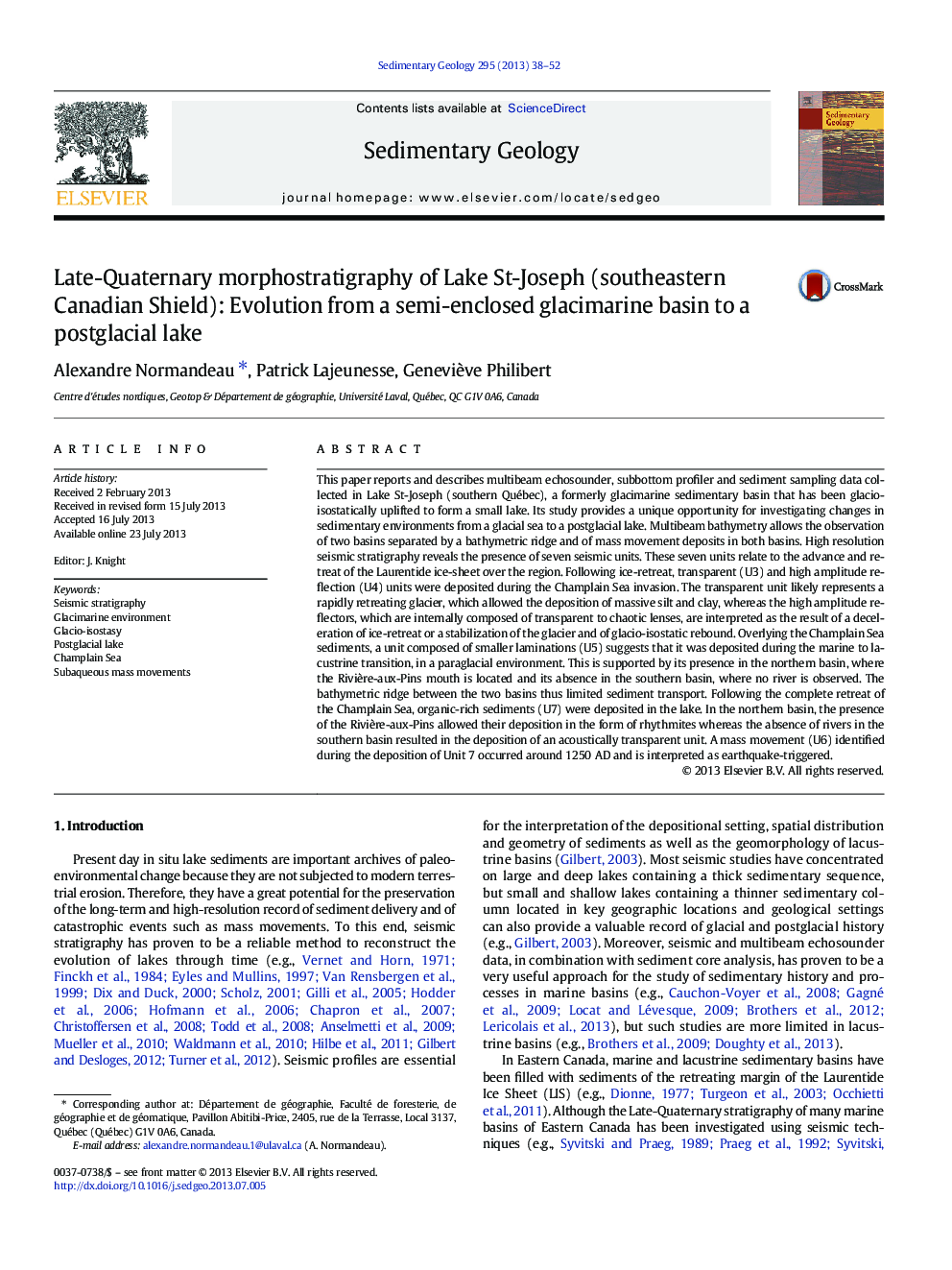| Article ID | Journal | Published Year | Pages | File Type |
|---|---|---|---|---|
| 4689501 | Sedimentary Geology | 2013 | 15 Pages |
This paper reports and describes multibeam echosounder, subbottom profiler and sediment sampling data collected in Lake St-Joseph (southern Québec), a formerly glacimarine sedimentary basin that has been glacio-isostatically uplifted to form a small lake. Its study provides a unique opportunity for investigating changes in sedimentary environments from a glacial sea to a postglacial lake. Multibeam bathymetry allows the observation of two basins separated by a bathymetric ridge and of mass movement deposits in both basins. High resolution seismic stratigraphy reveals the presence of seven seismic units. These seven units relate to the advance and retreat of the Laurentide ice-sheet over the region. Following ice-retreat, transparent (U3) and high amplitude reflection (U4) units were deposited during the Champlain Sea invasion. The transparent unit likely represents a rapidly retreating glacier, which allowed the deposition of massive silt and clay, whereas the high amplitude reflectors, which are internally composed of transparent to chaotic lenses, are interpreted as the result of a deceleration of ice-retreat or a stabilization of the glacier and of glacio-isostatic rebound. Overlying the Champlain Sea sediments, a unit composed of smaller laminations (U5) suggests that it was deposited during the marine to lacustrine transition, in a paraglacial environment. This is supported by its presence in the northern basin, where the Rivière-aux-Pins mouth is located and its absence in the southern basin, where no river is observed. The bathymetric ridge between the two basins thus limited sediment transport. Following the complete retreat of the Champlain Sea, organic-rich sediments (U7) were deposited in the lake. In the northern basin, the presence of the Rivière-aux-Pins allowed their deposition in the form of rhythmites whereas the absence of rivers in the southern basin resulted in the deposition of an acoustically transparent unit. A mass movement (U6) identified during the deposition of Unit 7 occurred around 1250 AD and is interpreted as earthquake-triggered.
